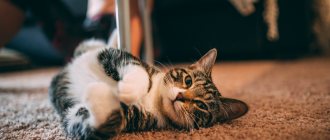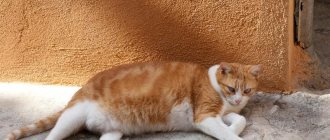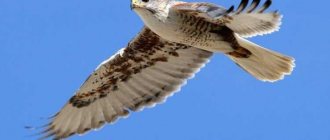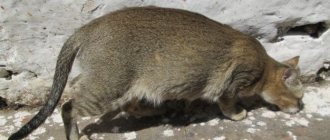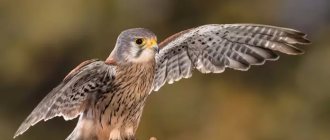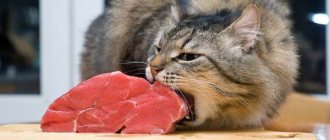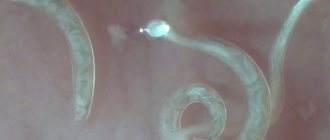Cats are quite graceful and perfect creatures. Is it possible to imagine the face of a homely beauty without funny and long mustaches, which not only decorate and give importance, but also perform a rather important function: they help to navigate in space. In science, whiskers are called vibrissae, from the word to vibrate. The cat, vibrating its antennae, learns about the object and surroundings. People living next to these charming creatures are well aware of the functions of their pets' whiskers, but few people have thought about how many whiskers a cat has.
Types of mustaches
In addition to the whiskers located on the cat's muzzle, there are other hairs that have a similar structure and function to those of regular whiskers, but are coarser than the animal's normal fur. These are hairs found on the cat's paw pads, above the pet's eyes, which look like eyebrows, under the chin, near the eyelids, and even on the tail. Of course, these hairs are less sensitive than the antennae located on the animal's face, but they are also important for hunting and orientation in space.
Where are they located?
One type of whiskers in cats is located on the sides of the nose above the pet’s upper lip, as children draw in pictures. It is these whiskers that are the longest and toughest; thanks to their sensitivity, they help the cat process a huge amount of information. Thickened hairs located on the cheeks, chin, and above the eyes are also vibrissae. Surprisingly, the compacted hairs located on the ankles of the paws and between the toes are also considered vibrissae.
What do cat whiskers look like and why are they needed?
A cat's whiskers are hard and fairly thick hairs, which are located several times deeper than the rest of the fur, as we found out earlier.
Scientifically, such whiskers are called vibrissae , which comes from the word to vibrate. The antennae grow individually and are enveloped in a constellation of nerve endings that have direct contact with the animal’s brain.
Each of them is individually responsible for a specific part of the cerebral cortex. Any damage or loss of one of them will cause slight disorientation subsequently of the type of functioning for which it is responsible.
Also, in addition to perceiving their surroundings, cats can express their emotions thanks to these hair formations. For example, if the antennae point down puzzled or sick about something
Another thing is when he rubs his hairs on your leg, this is regarded as a manifestation of love and tenderness for you.
In addition, there is an interesting fact when an adult cat often deliberately bites off the edges of the antennae of her kittens so that they do not run away as they grow up.
How many whiskers does a cat have?
Normally, a cat has 24 antennae. They are arranged in four rows on each side. Moreover, the two upper rows of whiskers can move autonomously, regardless of the two lower rows of whiskers.
There are three vibrissae in each row, that is, there are 12 antennae on each side of the muzzle. In total, these cute creatures have 24 vibrissae, without which they could not even exist. This refers to the antennae growing on the upper lip, in zoology called the anus, which is adjacent to the nasal mirror. If you count the total number of antennae on a cat, then on the face, together with the vibrissae located on the whiskers, eyelids and chin, there are from 33 to 40 antennae.
The structure and location of the whiskers in cats
Whiskers have been present on the faces of both male and female individuals since birth. The presence of this important organ does not depend on breed or genetics. But the difference in the length and thickness of the whiskers is associated with individual characteristics: breed, sex of the individual, conditions of detention. Knowing their structure and location will help you find out why a cat needs a mustache.
What are they made of?
The long hairs on the cat's face have an interesting structure. Each whisker is connected to a specific part of the brain and is responsible for the functioning of a specific system of the animal. This is why a cat needs whiskers: from the signals from the whiskers in the pet’s head, a complete picture of what is happening is formed. The hairs themselves grow up to 5-7 cm and consist of:
- nerve endings;
- skin glands and epidermis (the part invisible to the eye);
What is the length
Typically, the length of a cat's whiskers varies from 5 to 7 centimeters. But there are also exceptions. For example, cats - representatives of the Maine Coon breed - have registered truly gigantic whiskers - 19 centimeters, and in the Cornish Rex and Sphynx breeds the whiskers are not only small in size, but they are also curled, thereby making the whiskers look even shorter than they actually are . There have been cases when sphinxes had no mustaches at all, and this did not in any way affect their ability to navigate in space.
There is a popular belief that in a cat the very tips of the splayed whiskers are equal to the width of the animal. This helps them navigate when passing through a narrow opening. Having fluffed its antennae, the cat knows in advance whether it will fit into a given hole or not. As soon as he touches the hole with the tips of his mustache, he has reliable information about whether he should stick his nose in there.
The distance between the tips of the whiskers in a cat corresponds to the width at the shoulders of this animal.
A cat's whiskers are not only an attribute of beauty, but also a rather important organ. An experienced owner will determine not only the physical, but also the psychological state of the pet based on the condition of the mustache. And, if at some point the number of antennae on a cat decreases, then this is not a problem, the main thing is that you need to pay attention to your pet. With the necessary care, the broken antennae will grow back and perform their function properly.
Vibrissae
This is the scientific name for the hair on your pet's face. Speaking about why a cat needs a mustache, it is important to note that zoologists have studied this issue quite closely, and today there are well-founded answers. Vibrissae are a sixth sense organ that has a connection with the brain. One can only regret that you and I are deprived of such a tool. You can already say what will happen if you cut off a cat’s whiskers. This is about the same as if he were deprived of an eye, ear or nose. The brain will not be able to receive important signals and respond to them properly.
Preventive measures
Will help reduce the risk of your pet's whiskers breaking off. Owners can periodically treat for fleas, worms, and other parasites. The pet is given enough clean, fresh water. The room where the cat is kept is regularly ventilated and moistened. A selected and balanced diet includes supplements of minerals and vitamins. The animal is vaccinated against infections of viral origin. the number of water treatments is reduced, and the detergent must be suitable for the cat.
If the cat, despite breaking off its whiskers, remains active and cheerful, then there is no reason to panic. A consultation with a veterinarian won’t hurt, and treatment and corrective care will make your cat’s life even better.
Mustache problems and their causes
If individual vibrissae fall out and new ones grow in this place, then this is a natural renewal process that should not cause alarm to the owner.
However, if the mustache begins to break or fall out in large quantities, then it is necessary to understand the reasons for what is happening and eliminate them.
Problems may be associated with improper living conditions for the animal, and then they can be solved quite simply.
- In autumn and winter, thanks to heating devices, the air in the house may be too dry, which has a bad effect on the condition of the mustache. The solution is simple - ventilate more often or use humidifiers. This will benefit people too.
- Too frequent bathing, especially with fragrant shampoos, which can cause allergies and irritation in the animal. You should bathe your cat only when necessary and use high-quality detergents.
- Hormonal imbalance in the cat's body. They can be caused by stress, adolescence, pregnancy and childbirth and other reasons. Here you will need to consult a veterinarian.
- A cat can simply singe its whiskers, near the fireplace or on the gas stove. Not all animals are afraid of fire. It is necessary to follow it and determine whether the animal is too close to the flame.
- The cat doesn't drink enough water. You need to make sure that your pet always has access to clean water.
If a cat drinks little, this can negatively affect the condition of its whiskers.
Poor nutrition in a cat can also lead to problems with the whiskers, and, most likely, it will manifest itself in other health problems. From a lack of essential nutrients, the vibrissae become fragile, brittle, thin, and lose their elasticity. This condition is called vitamin deficiency.
Lack of vitamins often leads to brittleness and thinning of the whiskers
When feeding natural food, the diet must be balanced taking into account the needs and age of the animal; it is advisable to contact an appropriate specialist (nutritionist or veterinarian) for this purpose. The cat should receive only fresh and high-quality products, and natural ones, without surrogates, chemical additives and substitutes (of which, for example, there are so many in sausage). You should not give the animal fried, smoked, salty, sweet food, or feed it stale scraps from the human table. Be sure to add vitamins and minerals to your daily diet.
When purchasing vitamin complexes, it is recommended to pay attention to those that contain taurine and biotin - the most important components of a cat’s proper metabolism. The essential minerals are calcium, magnesium, phosphorus and potassium.
Specific vitamin preparations and their dosage regimen to improve the condition of the whiskers should be recommended by a veterinarian
When feeding industrial food, you need to choose high-quality, expensive brands from well-known manufacturers. Economy class food is made from beans, which are not a natural food for cats and are completely useless for them. In addition, there are many artificial additives and the composition is not balanced in vitamins and minerals.
Brittleness and loss of whiskers may be the result of an animal’s allergic reaction to some food component. Most often, cats are allergic to milk and fish, as well as to the chemical components of the products. The disease is accompanied by itching, hair loss, skin rashes, and eye problems.
In addition to allergies, mustache loss can be caused by other, more serious diseases.
- Hypothyroidism or hyperthyroidism are diseases of the thyroid gland associated with insufficient or excessive activity of this organ. The first signs of a hormonal imbalance in the body will be thinning and loss of hair and whiskers, as well as a sharp change in the pet’s weight.
- Diabetes mellitus in a cat also leads to loss of whiskers and fur.
- Mycoses are fungal diseases, as well as dermatitis, bacterial infections and other skin diseases, including lichen, accompanied by severe itching, peeling, hair and whisker loss.
- Parasites such as worms, fleas, ticks, and lice eaters reduce the animal’s overall immunity and can cause whiskers to fall out. A sharp lightening of the whiskers at a young age almost always indicates that the cat has become infected with worms.
We recommend reading: Catsan - fillers and moisture absorbers for cats
Whiskers falling out may indicate a cat is infected with parasites.
ATTENTION, TEST! Answer a few simple questions and find out what kind of owner you are for your cat:
Does your cat have a name?
How often do you play with your pet?
Do you get your vaccinations and parasite treatment up to date?
Is your kitten spayed/neutered?
What do you feed your purr?
What kind of owner are you for your cat?
Your kitty is very happy
Congratulations! Your purr is healthy and happy, surrounded by care and love. You are a responsible and good owner for your kitty.
Your pussy could be happier
Hmm... with such an owner, even the cockroaches will all die. Maybe you should have gotten a cactus instead of a cat? Yes, you are not the best and most caring owner, but you still have a chance to fix everything. Start taking proper care of your pet.
Why is it forbidden to cut your mustache?
A cat's whiskers are an incredibly important part of their navigation system. If the mustache is damaged, orientation difficulties will arise. A cat with a trimmed mustache may bump into objects at first, and when jumping, it may even fall and get injured. Also, the animal may get stuck trying to crawl into a hole that is too narrow.
You can’t trim a cat’s whiskers yourself, just out of curiosity. If damage to the whiskers occurred through no fault of the owner or household members, it is recommended to keep the pet at home for some time. This will reduce the risk of serious injury.
Cats often chew off the whiskers of their newborn kittens themselves. It is believed that the mother does this for safety reasons, to control overly curious kids. When the whiskers grow back, after 2-3 months, the kittens are already quite strong and are able to explore the world around them without running the risk of getting injured in places that are dangerous for completely helpless babies.
There are also breeds of cats without whiskers, for example, hairless cats. They navigate in space no worse than their counterparts with vibrissae. This is due to the fact that during the process of evolution, the whiskers of such hairless cat breeds disappeared gradually, with the atrophy of the nerve fibers.
The mustache has its own lifespan. Over a certain period, they wear out, losing their natural elasticity and conductivity. Such vibrissae are gradually replaced by new ones. A cat's whisker that has fallen out has a rounded end - a thickening. While a broken or clipped vibrissa has a pointed tip.
It is important to carefully monitor the condition of not only the coat and skin, but also the condition of the pet’s whiskers. Thus, the cause of excessive mustache loss and breaking off can be both physiological and pathological reasons. Various bacterial and fungal infections, as well as injuries, must be treated promptly to avoid complications.
Some more interesting facts about cat whiskers
- The owner of the longest mustache in the Guinness Book of Records, a Maine Coon named Missy, mustache length is 20 cm.
- In kittens, whiskers appear in the womb, earlier than hair.
- Mothers often chew off the whiskers of small kittens. Without them, the baby feels insecure and stays close to the cat, so she protects him.
- Some hairless breeds lack whiskers, but their functions are performed by the sensitivity of the skin.
- The length of the whiskers in both directions is equal to the width of the cat's body.
Video review about why cats need whiskers (vibrissae)?
Sources
- https://usatiki.ru/vibrissy-u-koshek/
- https://FB.ru/article/337208/chto-takoe-vibriss-ih-funktsiya-v-jizni-mlekopitayuschih
- https://kinpet.ru/dlya-chego-koshke-usy-udivitelnye-fakty-o-vibrissakh/
- https://kipmu.ru/zachem-zhivotnym-usy/
- https://prohvost.club/koshki/fiziologiya-koshek/zachem-kotu-usyi.html
- https://zen.yandex.com/media/pro_koshek/zachem-koshkam-nujny-usy-5dfa89f46d29c199b0a549b4
[collapse]

